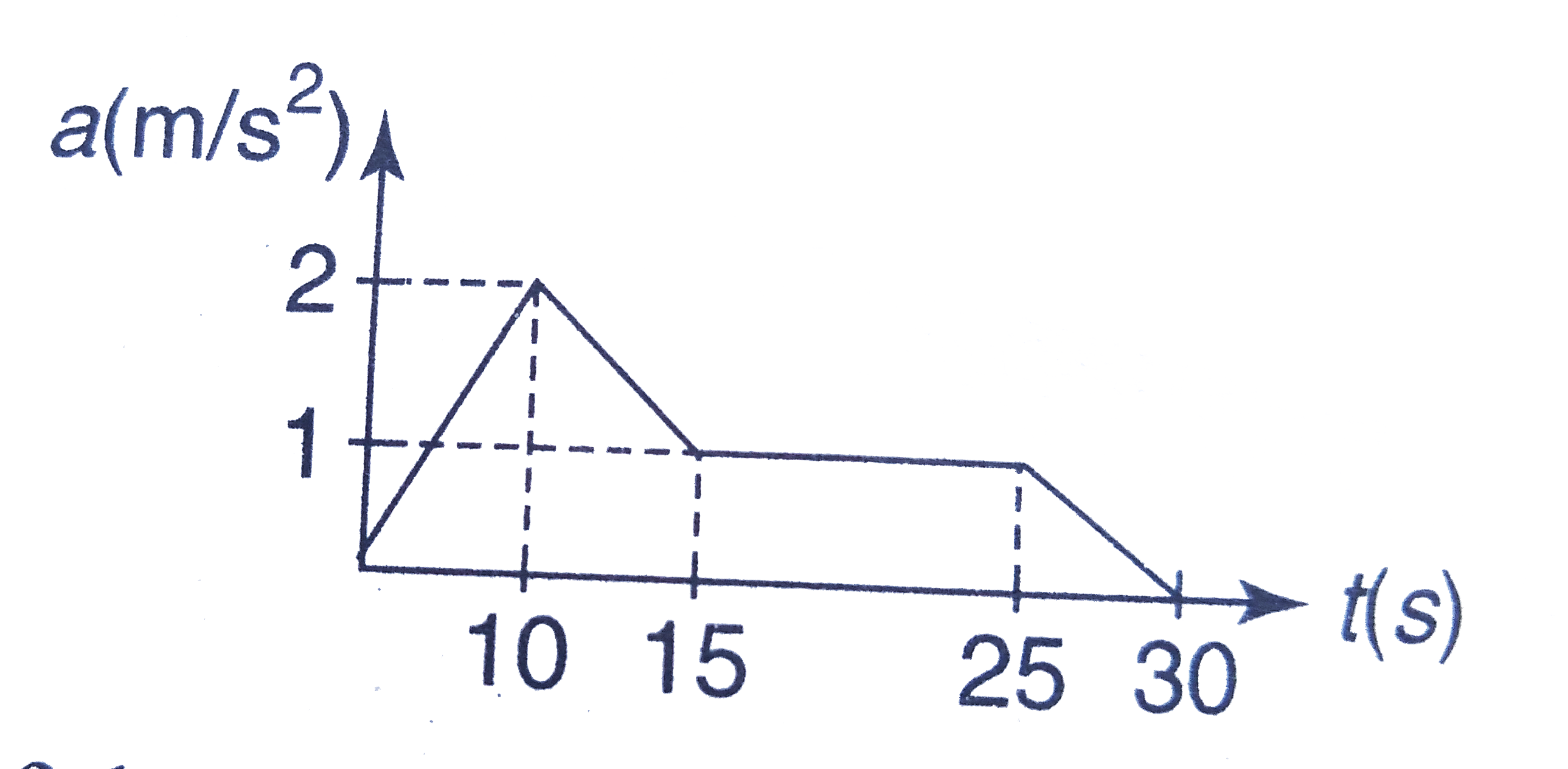At t = 0 and u = 0, an object begins to be uniformly accelerated by a force of 40 N. The momentum of the body at t= 4 s is
The correct Answer is:D
To solve the problem step by step, we will use the concepts of Newton's laws of motion and the relationship between force, momentum, and time.
Step 1: Understand the Given Information
- Initial velocity (u) = 0 m/s (at t = 0)
- Force (F) = 40 N
- Time (t) = 4 s
Step 2: Use Newton's Second Law
According to Newton's second law, force is equal to the rate of change of momentum:
F=ΔpΔt
Where:
- Δp is the change in momentum
- Δt is the change in time
Step 3: Express Change in Momentum
The change in momentum can be expressed as:
Δp=pf−pi
Where:
- pf is the final momentum
- pi is the initial momentum
Given that the initial velocity is 0, the initial momentum pi is:
pi=m⋅u=m⋅0=0
Thus, the change in momentum becomes:
Δp=pf−0=pf
Step 4: Substitute Values into the Equation
Now substituting into the equation of force:
F=pft
Rearranging gives:
pf=F⋅t
Step 5: Calculate Final Momentum
Substituting the values of force and time:
pf=40N⋅4s=160kg m/s
Final Answer
The momentum of the body at t=4s is:
160kg m/s
---
- Initial velocity (u) = 0 m/s (at t = 0)
- Force (F) = 40 N
- Time (t) = 4 s
According to Newton's second law, force is equal to the rate of change of momentum:
F=ΔpΔt
Where:
- Δp is the change in momentum
- Δt is the change in time
The change in momentum can be expressed as:
Δp=pf−pi
Where:
- pf is the final momentum
- pi is the initial momentum
pi=m⋅u=m⋅0=0
Δp=pf−0=pf
Now substituting into the equation of force:
F=pft
Rearranging gives:
pf=F⋅t
Substituting the values of force and time:
pf=40N⋅4s=160kg m/s
The momentum of the body at t=4s is:
160kg m/s
Topper's Solved these Questions
- LAW OF MOTIONBook:NARAYNAChapter:LAW OF MOTIONExercise:EXERCISE - III
Explore 20 Videos
- KINETIC THEORY OF GASESBook:NARAYNAChapter:KINETIC THEORY OF GASESExercise:LEVEL-III(C.W)
Explore 52 Videos
- MATHEMATICAL REVIEW & PHYSICAL WORLDBook:NARAYNAChapter:MATHEMATICAL REVIEW & PHYSICAL WORLDExercise:C.U.Q
Explore 13 Videos
Similar Questions
A body is projected with a speed u at an angle of 30∘ with the horizontal at t=0. The angular momentum of the body about the point of projection is x√3μ364g at t=3u4g. Find the value of x ?
View SolutionA angular positio of a point on the rim of a rotating wheel is given by θ=4t−3t2+t3 where θ is in radiuans and t is in seconds. What are the angualr velocities at
(a).t=2.0 and
(b). t=4.0s
(c). What is the average angular acceleration for the time interval that begins at t=2.0s and ends at t=4.0s?
(d). What are the instantaneous angular acceleration at the biginning and the end of this time interval?
View Solution
Knowledge Check
In figure shown, the graph shows the variation of acceleration of body with time t. The velcocity of the body at t=0 is zero. The velocity of the body at t=30s is.
 A30m/sB20m/sC40m/sDnone
A30m/sB20m/sC40m/sDnoneAccording to Newton s second law of motion F=ma where F is the force required to produce an acceleration a in a body of mass m If a = 0 then F=0 no external force is required to move a body uniformly along a straight line If a force F acts on a body for t seconds the effect of the force is given by Impulse =F × t =change in linear momentum of the body
Average force exerted by the bat is .A480NB120NC1200ND840NAccording to Newton s second law of motion F=ma where F is the force required to produce an acceleration a in a body of mass m If a = 0 then F=0 no external force is required to move a body uniformly along a straight line If a force F acts on a body for t seconds the effect of the force is given by Impulse =F × t = change in linear momentum of the body
The retardation of the ball is .A1600m/s2B320m/s2C3200m/s2D160m/s2
If the relation between acceleration and time for an object is given by
a=2t+4t2
Calculate the position of object from the origin at t = 4 s. Assume the object to be at rest at t=0.
View SolutionA body travels uniformly a distance of (20.0+-0.2)m in time (4.0+-0.04)s. The velocity of the body is
View SolutionAccording to Newton s second law of motion F=ma where F is the force required to produce an acceleration a in a body of mass m If a = 0 then F=0 no external force is required to move a body uniformly along a straight line If a force F acts on a body for t seconds the effect of the force is given by Impulse =F × t = change in linear momentum of the body
A cricket ball of mass 150g is moving with a velocity of 12m/s and is hit by a bat so that the ball is turned back with a velocity of 20m/s if duration of contact between the ball and the bat is 0.01sec The impulse of the force is .
View SolutionThe time in which a force of 2 N produces a change of momentum of 0.4kg−ms−1 in the body is
View SolutionA body of mass m is projected with intial speed u at an angle θ with the horizontal. The change in momentum of body after time t is :-
View Solution
